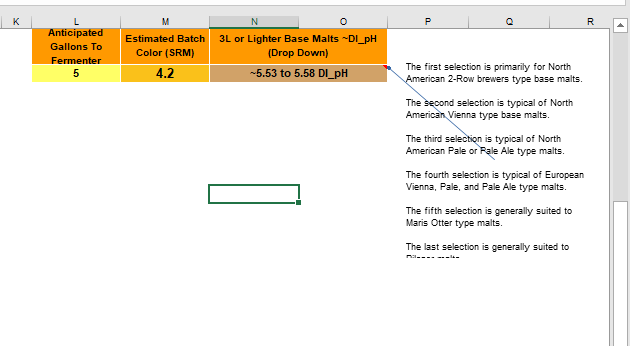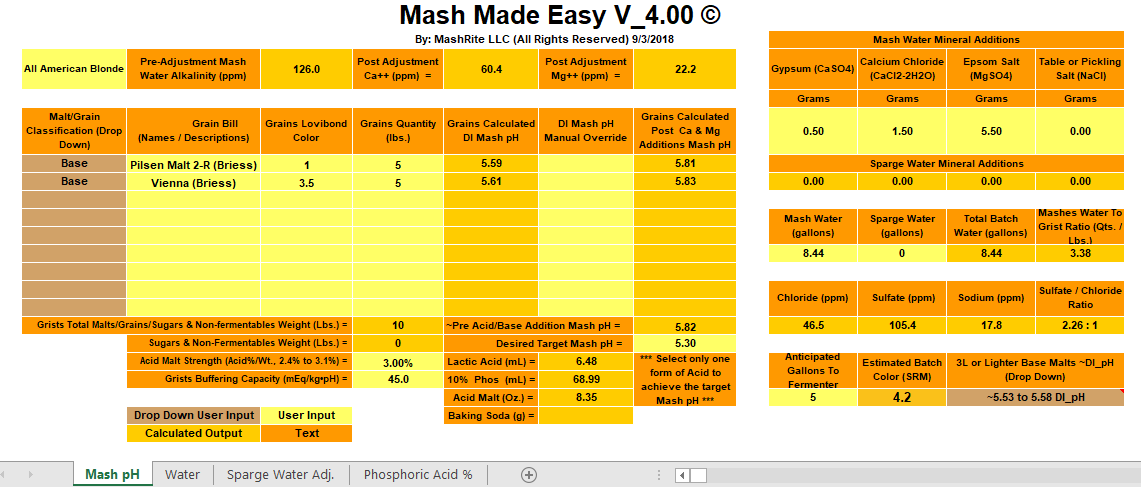Silver_Is_Money
Larry Sayre, Developer of 'Mash Made Easy'
Announcing the release of 'Mash Made Easy' version 3.00, in both the Standard and Metric formats.
The major change is a lowering of the spreadsheets prediction for the requirement of and quantity of need for baking soda when addressing recipes such as Stouts and Porters, or any recipe which contains an abundance of dark roasted malts and/or roast barley. This change required a new engine overhaul, and thus the beginning of the new series numeration of 3.xx.
Also, I believe that I've finally gotten fully to the bottom of a nagging bug which occasionally caused the Metric version to lose its ability to properly assign correct DI_pH's to EBC colored malts/grains, the problem for which cropped up not initially upon use, but rather occasionally with the continued re-use of the spreadsheet.
These changes and several more of importance are detailed more fully on my website. All users are urged to transition to version 3.00.
The major change is a lowering of the spreadsheets prediction for the requirement of and quantity of need for baking soda when addressing recipes such as Stouts and Porters, or any recipe which contains an abundance of dark roasted malts and/or roast barley. This change required a new engine overhaul, and thus the beginning of the new series numeration of 3.xx.
Also, I believe that I've finally gotten fully to the bottom of a nagging bug which occasionally caused the Metric version to lose its ability to properly assign correct DI_pH's to EBC colored malts/grains, the problem for which cropped up not initially upon use, but rather occasionally with the continued re-use of the spreadsheet.
These changes and several more of importance are detailed more fully on my website. All users are urged to transition to version 3.00.





